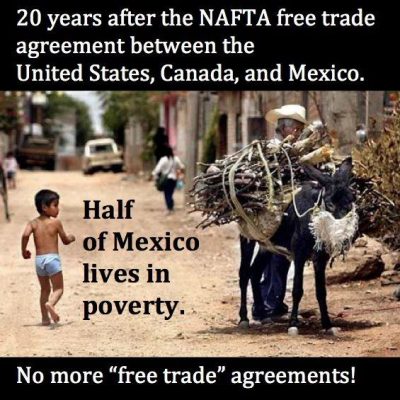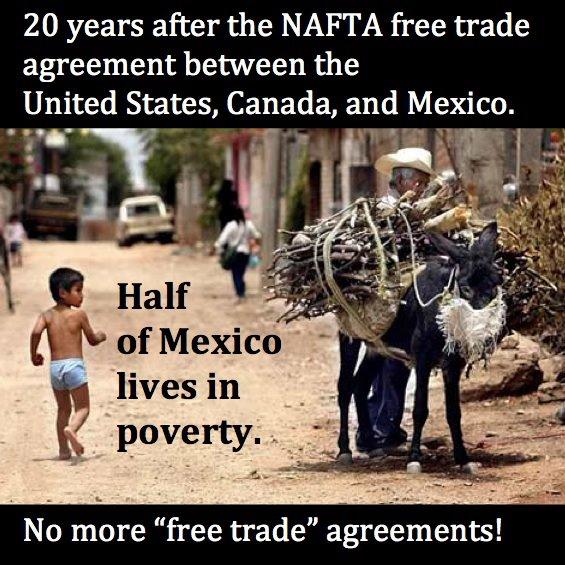 There is an important element that is constantly missing in the migration debate in the United States – the push factors, or what it is that pushes millions of Mexicans and Central Americans migrate. The destruction of local economies and livelihoods by U.S.-led free trade agreements like the DR-CAFTA and NAFTA, which turns 20 years old on January 1st, is what drives so many workers to look for jobs, get money to send back home to their impoverished families. It is not the search for the ever more elusive “American Dream” that spurs so much migration.
There is an important element that is constantly missing in the migration debate in the United States – the push factors, or what it is that pushes millions of Mexicans and Central Americans migrate. The destruction of local economies and livelihoods by U.S.-led free trade agreements like the DR-CAFTA and NAFTA, which turns 20 years old on January 1st, is what drives so many workers to look for jobs, get money to send back home to their impoverished families. It is not the search for the ever more elusive “American Dream” that spurs so much migration.
Today, in the midst of the migration debate, It is surprising that the recent decrease in migration from Mexico to the United States is being explained again and again as being in part due to the country undergoing an “economic boom” and Mexicans enjoying “better educational and job opportunities.”
Far from it, the forecasts of Mexico’s economic growth for this year have slumped to less than three percent, given its continued dependence on the recovery of the U.S. economy. This growth rate is not enough for Mexico to recover from the grave economic crisis it has undergone in recent years and the mediocre growth all along the NAFTA years. Worse, the only sector that “grows” in Mexico is the export sector, dominated by large transnational companies, while internal economy of Mexico remains stagnated.
The paltry growth rate of Mexico’s internal economy is reflected in fewer jobs and educational opportunities for young people in Mexico. According to the Organization for Economic Cooperation and Development (OECD), 25 percent of Mexico’s young people don’t study or work because of lack of opportunities.
While it is true that Mexican migration has slowed because of a drop in demand for labor in the United States, the security situation in Mexico also comes into play as some migrants have been deterred from traveling to the border out of fear of being preyed upon by criminal groups. Hundreds of migrants die every year in the hands of narco organizations and the complicity of migrant authorities.
Despite the rhetoric, the Obama administration seems oblivious to the dramatic situation of millions of migrant workers and their families, many with U.S. born children. So far it has deported 1.7 million migrants, which surpasses by far the number of deportees during the two previous administrations of Bush.
A supposedly-growing middle class in Mexico is another myth spun by NAFTA proponents. This myth has been busted by official figures that indicate that most Mexicans are poor and belong to the working class. Those who celebrate Mexico’s “rising middle class” do so based on the growing patterns of U.S.-style consumerism, with the proliferation of Walmarts and processed food that have also contributed to make of Mexico the fattest nation on Earth, recently surpassing the United States for the first time.
And while some applaud the recovery of Mexico’s manufacturing sector, the recovery is due to the fact that Mexico’s wages are even lower than in China. This may be beneficial for investors but it is detrimental to the Mexican worker.
As NAFTA reaches its 20th anniversary on January 1, 2014, there is little to celebrate in Mexico or the United States. The figures show enhanced trade and investment that benefit a handful of transnational corporations. Meanwhile, Mexican citizens are worse off and the push to migrate remains.
